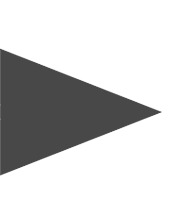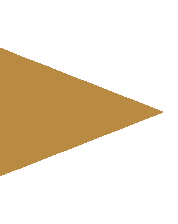1929
Gill and James document iron-rich rocks around present day Schefferville, Québec



*A qualified person has not done sufficient work to classify the historical estimate as a current mineral resource and Anteros Metals Incorporated is not treating the historical estimate as a current mineral resource. Anteros believes that these historic results provide an indication of the potential of the property and are relevant from a continuing exploration perspective. Historical mineral resource estimate from the Report entitled Technical Report: Schefferville Area Phase I DSO Iron Projects Resource Update, Western Labrador – NE Québec, Canada by Maxime Dupéré dated June 27, 2014 and is filed on SEDAR. The Technical Report was prepared in accordance with National Instrument 43-101 – Standards of Disclosure for Mineral Projects (NI 43-101), NI 43-101F1, and with CIM standards and Mineral Resource best practices. The stated resource uses an iron cut-off grade of 50%, and grades were not capped.






The Knob Lake Iron and Manganese Deposit is located in western Labrador 2.5 kilometres south of Schefferville, Québec, 1.5 kilometres east of the James Iron Deposit, and 2.3 kilometres southeast of the former Silver Yards beneficiation plant at Ruth Lake. The Knob Lake Property is 100% owned by Anteros Metals and consists of three contiguous mineral claim units, covering an area of 75 hectares that is road accessible from Schefferville.

The Labrador Trough is a Proterozoic orogenic iron belt that extends from the eastern margin of Ungava Bay southwards to Labrador City and has been mined for iron ore since 1954. The principal iron formation unit of the area, responsible for world-class iron-ore deposits, is the sedimentary subaqueous Sokoman Formation of the Knob Lake Group, a 30 to 350 metre continuous stratigraphic unit along the length of the Labrador Trough. Deposition of the Sokoman Formation resulted from oxidation of upwelling waters rich in reduced iron in conjunction with continual transport of the iron towards a shallow-water, oxidizing environment of the sedimentary platform.
The Lower Iron Formation (a subunit of the Sokomon Formation) consists mostly of magnetite-poor carbonate–silicate facies. This grades upward into the Middle Iron Formation, an oxide facies marked by abundant coarse-grained hematite and/or magnetite and sugary-textured quartz. These oxide-rich beds are the most economically important with the iron-rich layers and lenses commonly containing more than 50% hematite and magnetite. The Upper Iron Formation is another oxide-poor, carbonate–silicate facies rock.
The Labrador Trough is a Proterozoic orogenic iron belt that extends from the eastern margin of Ungava Bay southwards to Labrador City and has been mined for iron ore since 1954. The principal iron formation unit of the area, responsible for world-class iron-ore deposits, is the sedimentary subaqueous Sokoman Formation of the Knob Lake Group, a 30 to 350 metre continuous stratigraphic unit along the length of the Labrador Trough. Deposition of the Sokoman Formation resulted from oxidation of upwelling waters rich in reduced iron in conjunction with continual transport of the iron towards a shallow-water, oxidizing environment of the sedimentary platform.
The Lower Iron Formation (a subunit of the Sokomon Formation) consists mostly of a magnetite-poor carbonate–silicate facies. This grades upward into the Middle Iron Formation, an oxide facies marked by abundant coarse-grained hematite and/or magnetite and sugary-textured quartz. These oxide-rich beds are the most economically important with the iron-rich layers and lenses commonly containing more than 50% hematite and magnetite. The Upper Iron Formation is another oxide-poor, carbonate–silicate facies rock.
The Knob Lake property is centered over the Upper, Middle, and Lower Iron Formations of the Sokoman Formation, a Superior-type iron formation. An especially iron-rich silica-chert horizon of the property (between the middle and lower iron formations) exhibits direct shipping ore (DSO) characteristics, grading over 60% Fe.
The Knob Lake Property deposit remains open to expansion along iron-rich stratigraphy, including along strike.
1929
Gill and James document iron-rich rocks around present day Schefferville, Québec
1949
The Iron Ore Company of Canada (“IOC”) is formed and between 1954 and 1982, ships in excess of 150 million tons (152.5 million tonnes) of lump and sinter fine ore
1970’s
IOC explores the Knob Lake property with a combination of reverse circulation (“RC”) drilling, diamond drilling, and trenching, later producing a mineral inventory
2006
Labrador Iron Mines Ltd (“LIM”) drills a single diamond drill hole totaling 44.2 metres
2008
LIM performs bulk sampling and metallurgical work as well as completing nine RC holes for a total of 612 metres
2009
LIM commissions LIDAR surveying and five RC holes totaling 270.5 metres
2011
LIM commissions airborne gravity and magnetometer surveying over the entirety of the Property as well as five RC holes totaling 321 metres
2014
LIM commissions an inaugural Mineral Resource Estimate for Knob Lake and adjacent deposits
Gill and James document iron-rich rocks around present day Schefferville, Québec
The Iron Ore Company of Canada (“IOC”) is formed and between 1954 and 1982, ships in excess of 150 million tons (152.5 million tonnes) of lump and sinter fine ore
IOC explores the Knob Lake property with a combination of reverse circulation (“RC”) drilling, diamond drilling, and trenching, later producing a mineral inventory
Labrador Iron Mines Ltd (“LIM”) drills a single diamond drill hole totaling 44.2 metres
LIM performs bulk sampling and metallurgical work as well as completing nine RC holes for a total of 612 metres
LIM commissions LIDAR surveying and five RC holes totaling 270.5 metres
LIM commissions airborne gravity and magnetometer surveying over the entirety of the Property as well as five RC holes totaling 321 metres
LIM commissions an inaugural Mineral Resource Estimate for Knob Lake and adjacent deposits